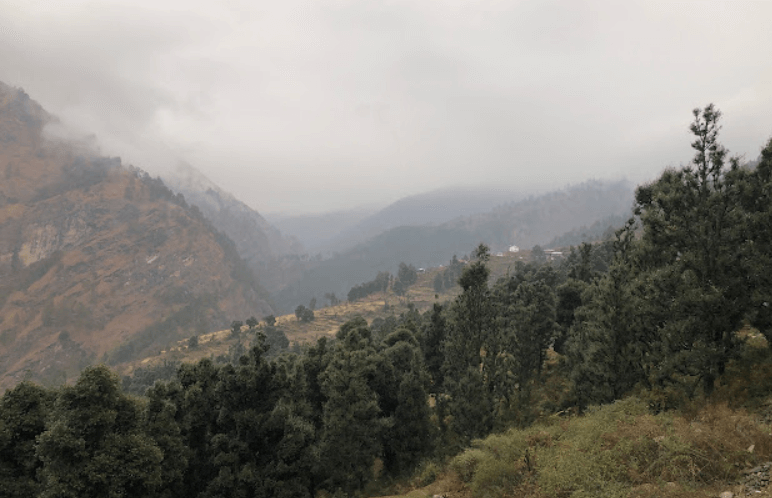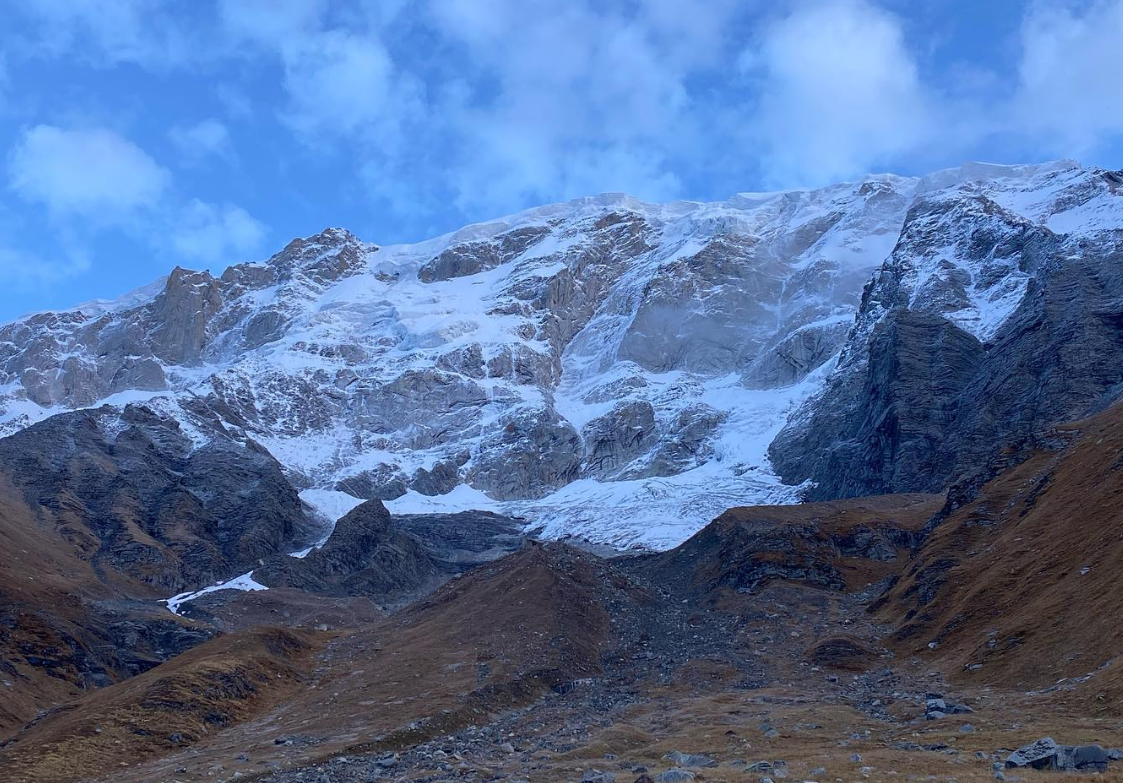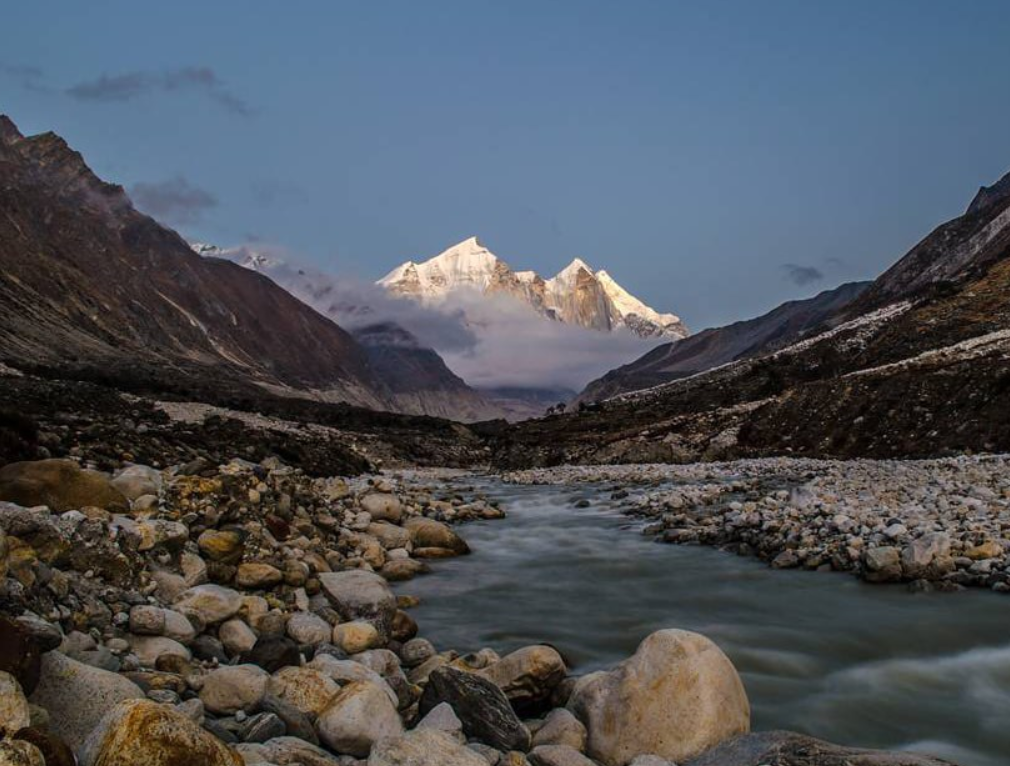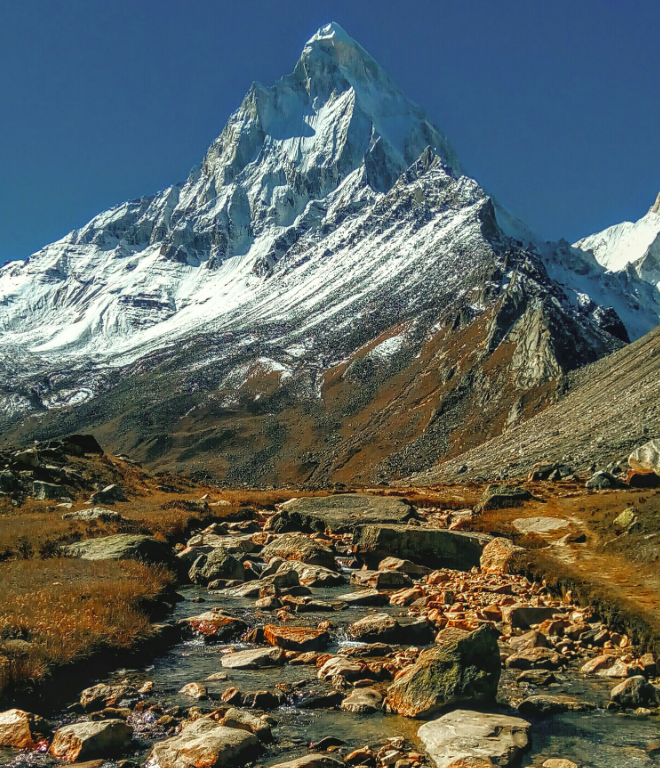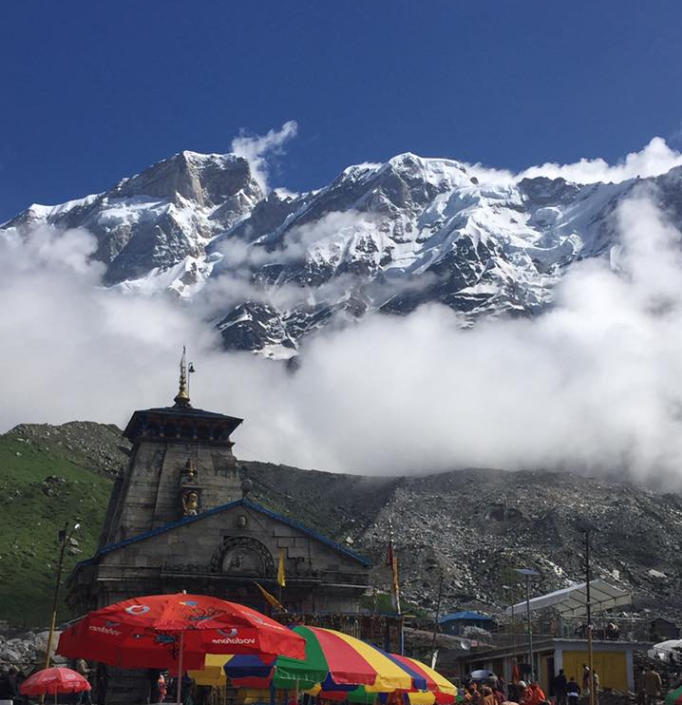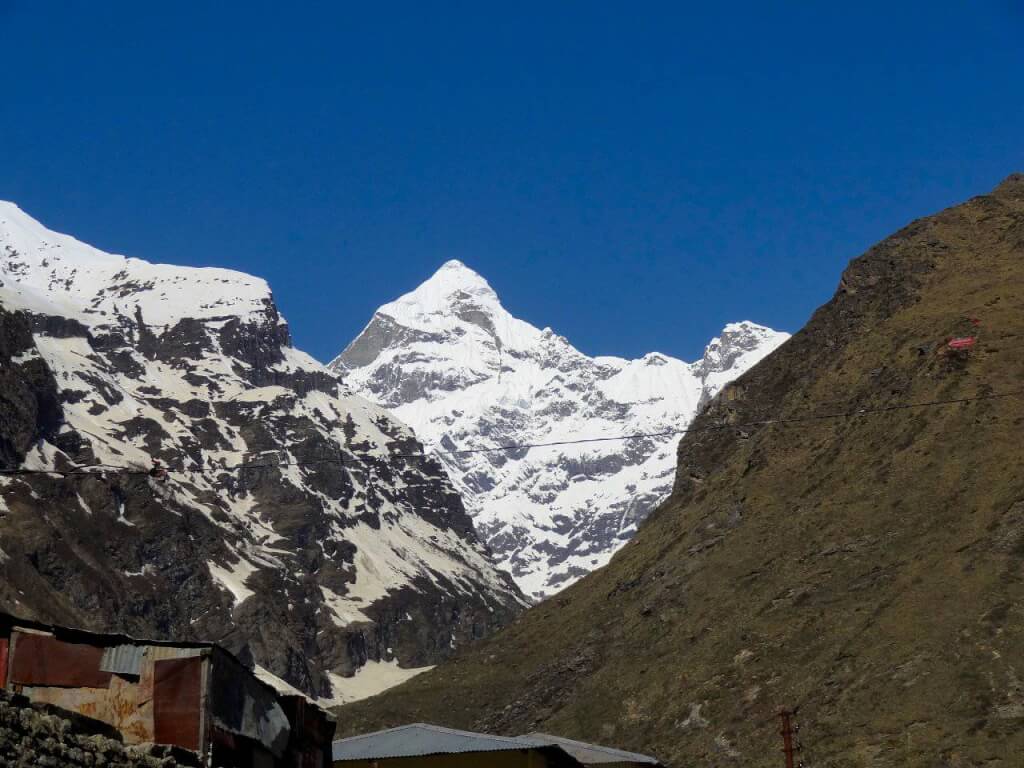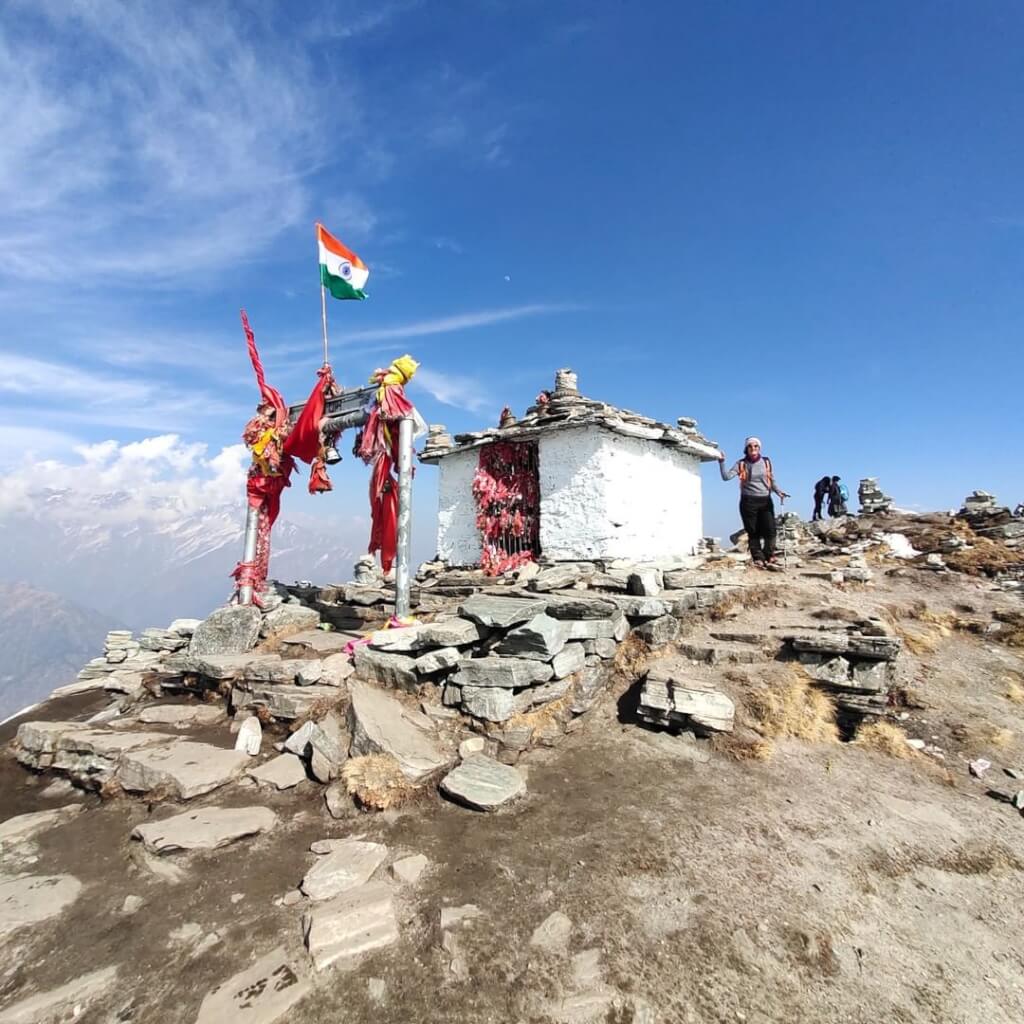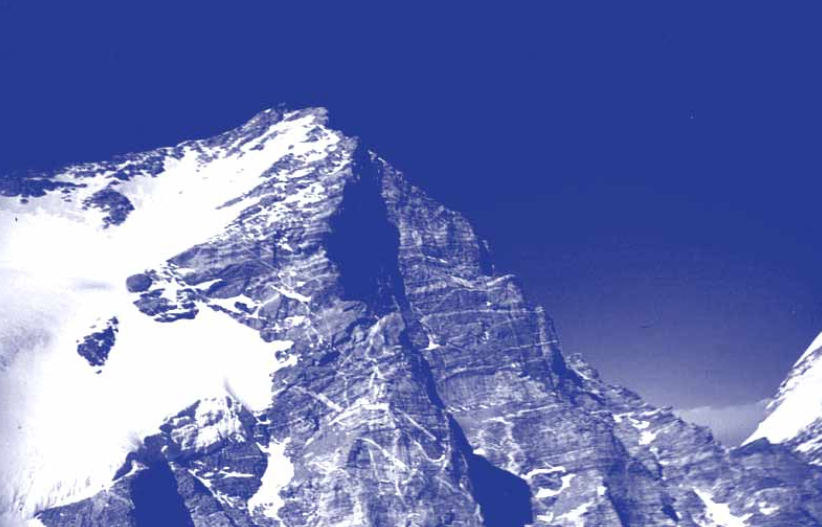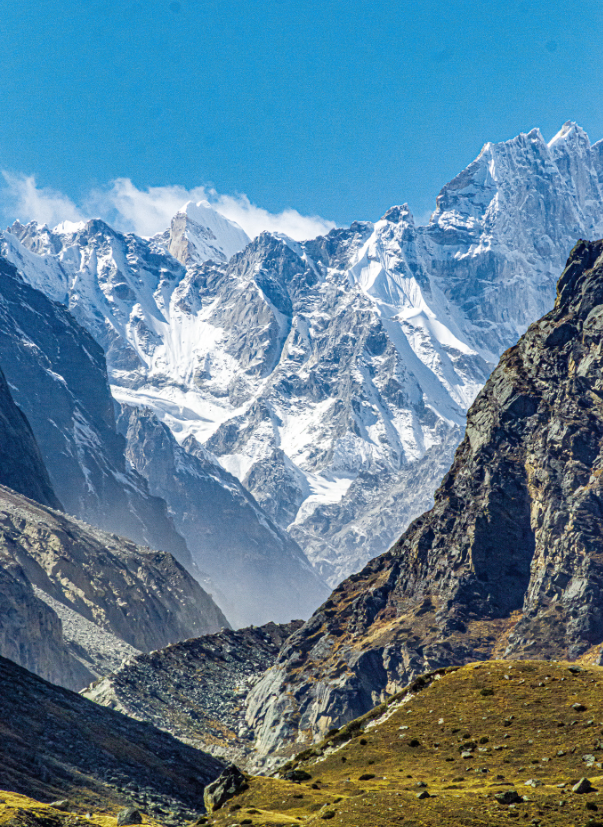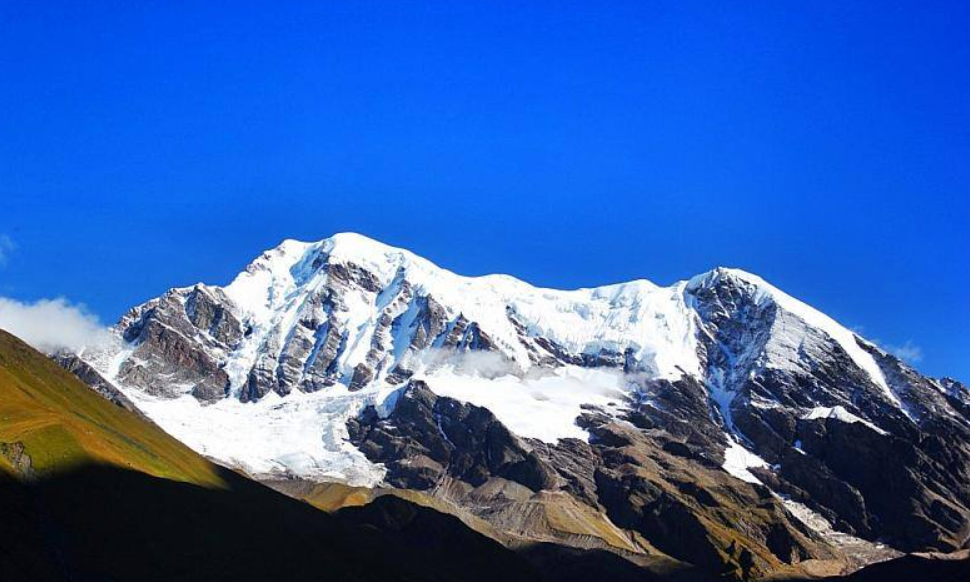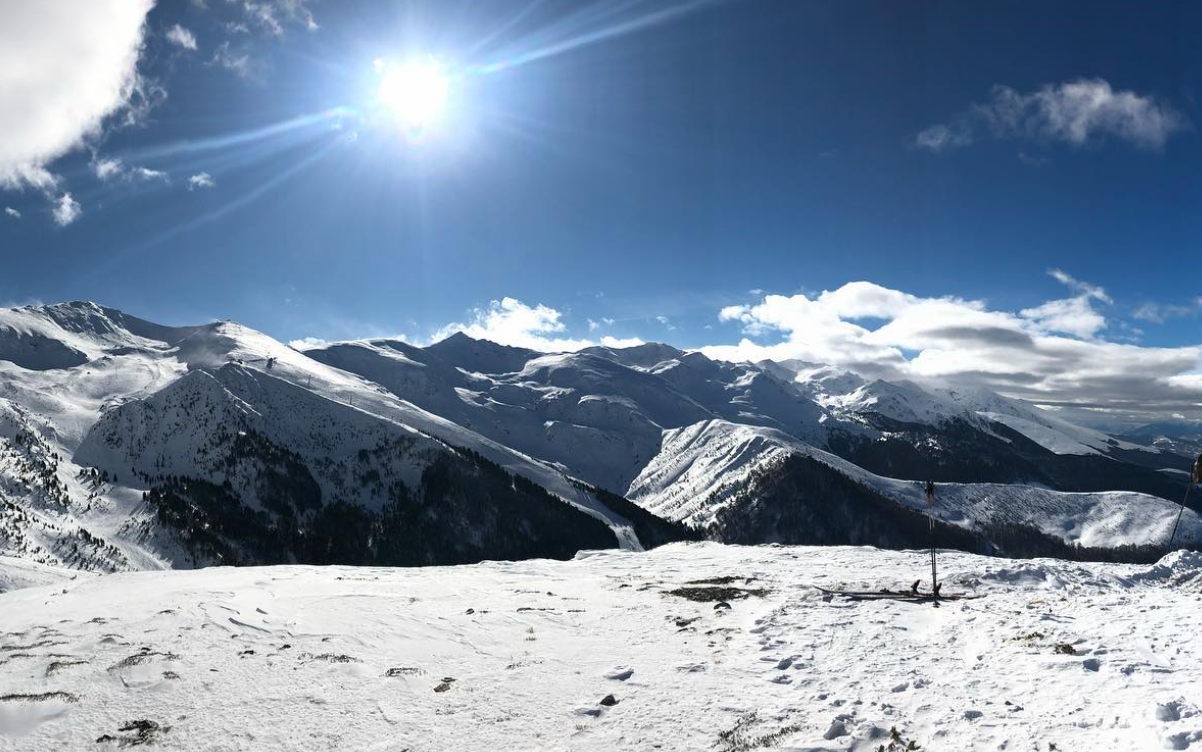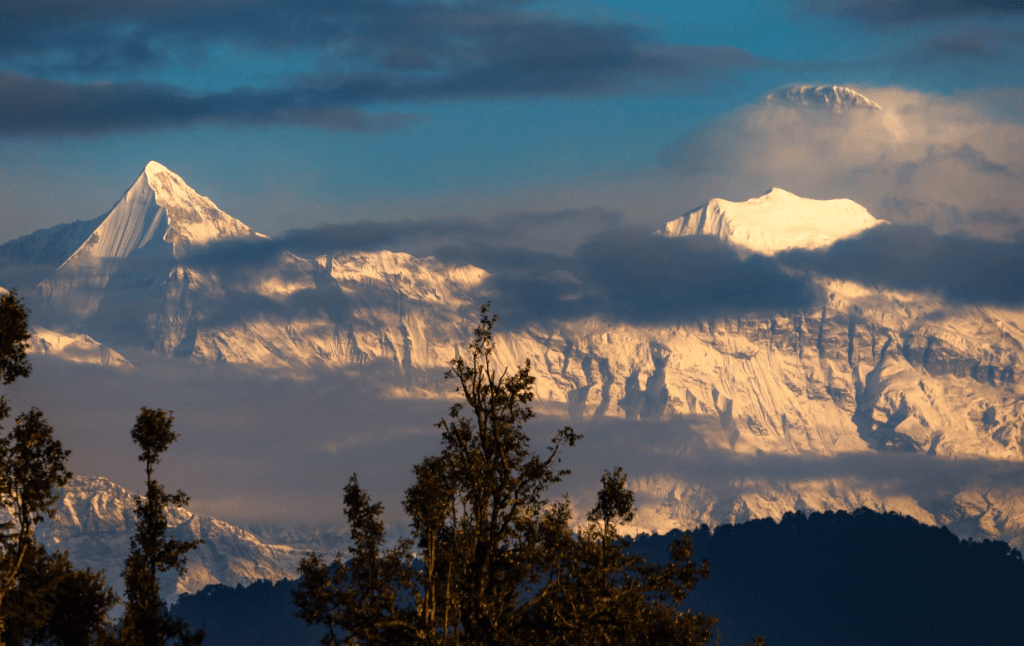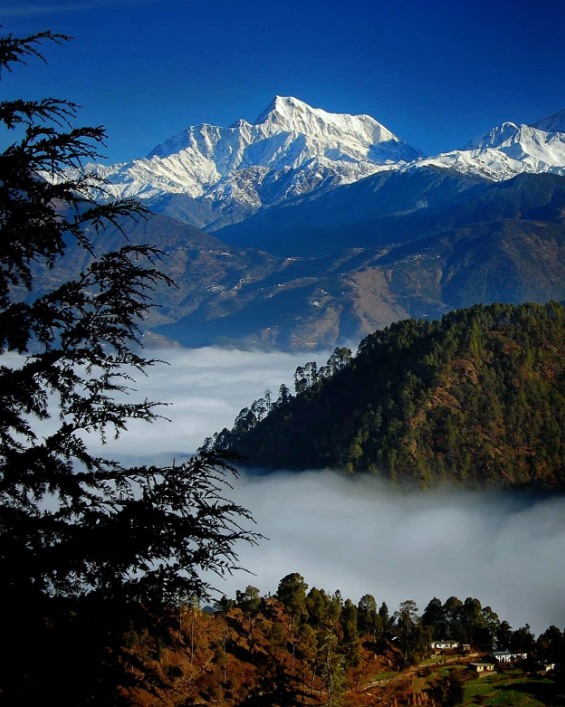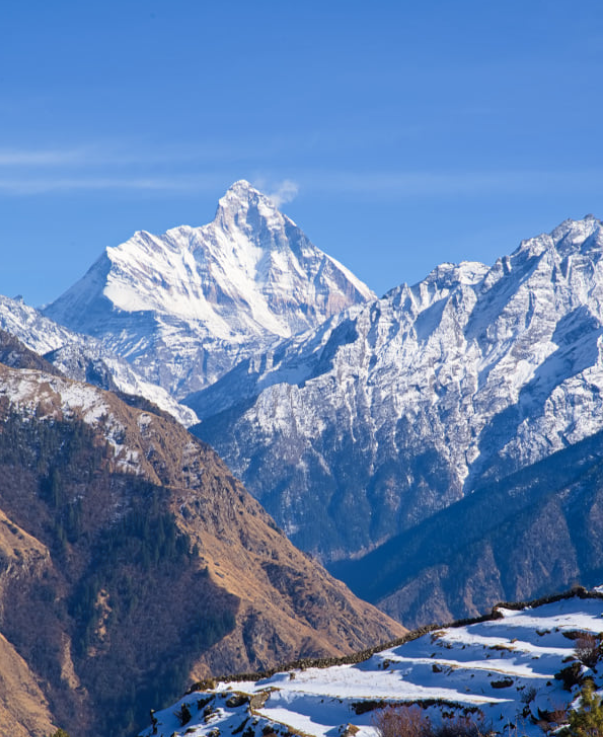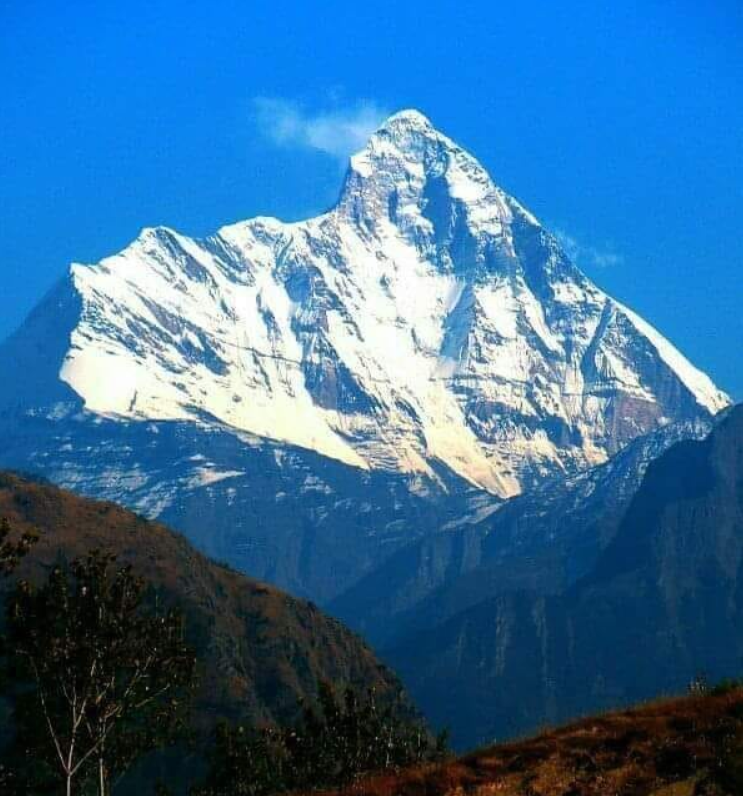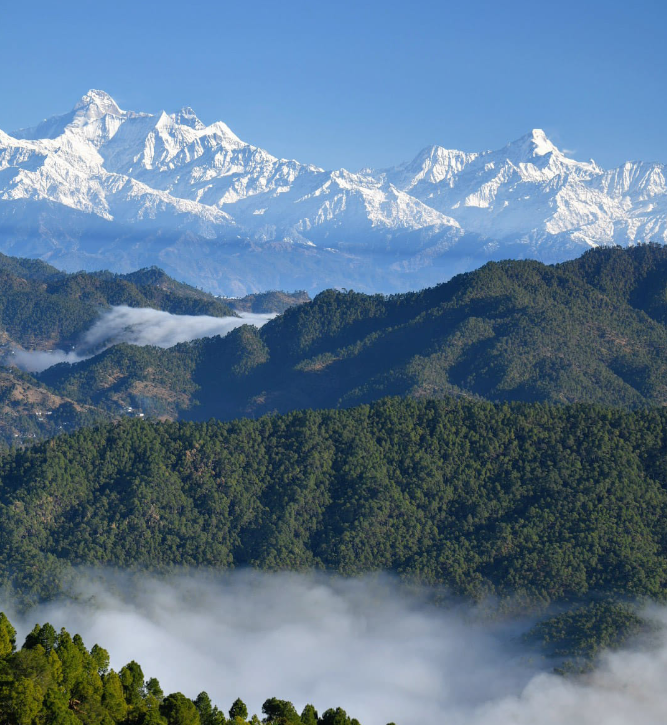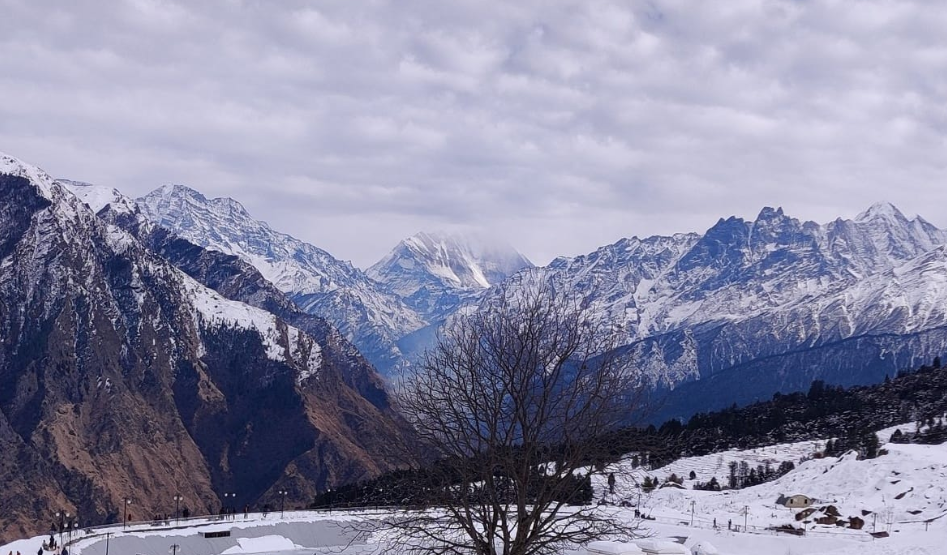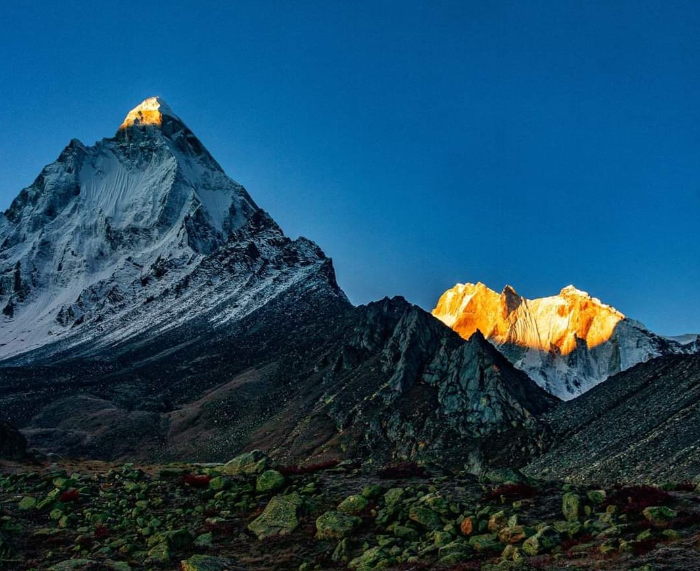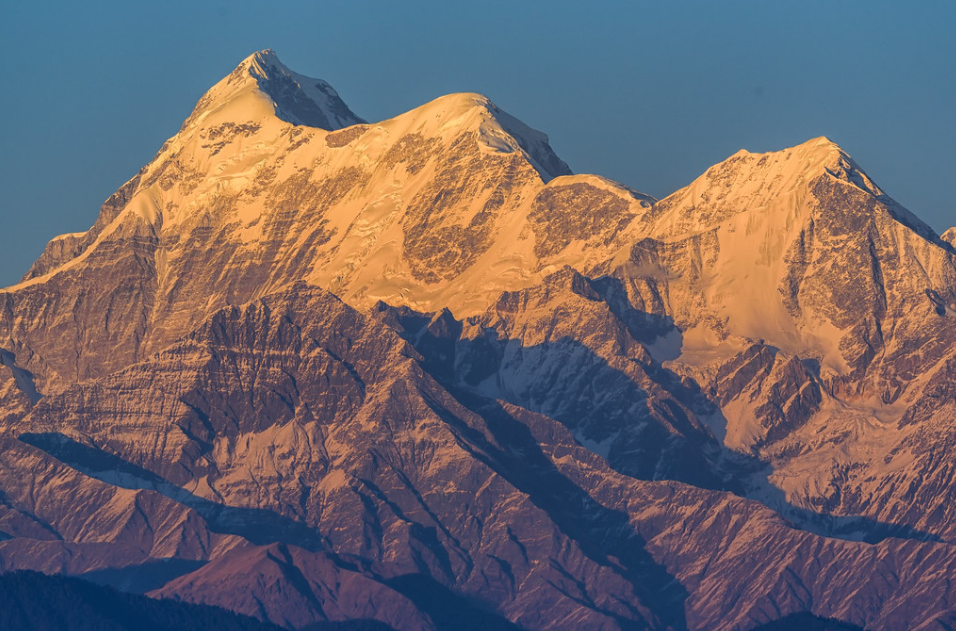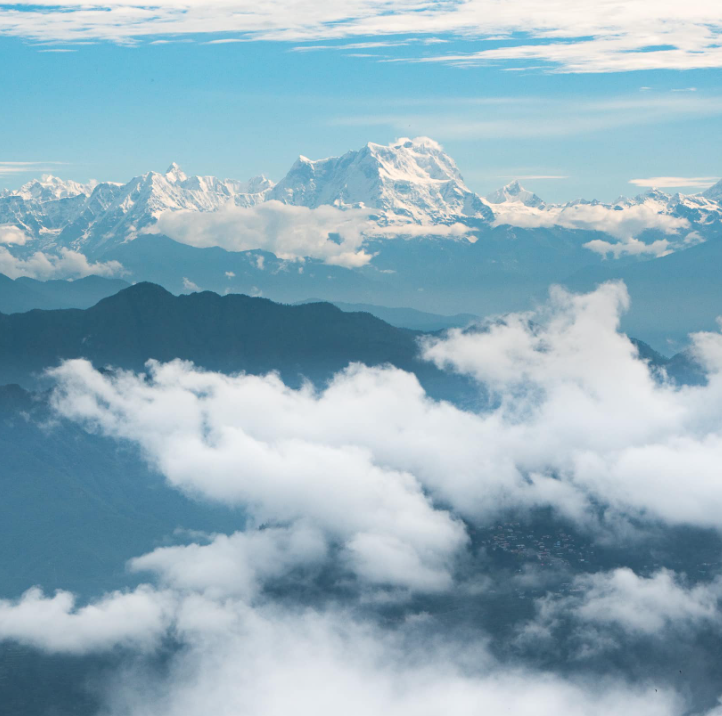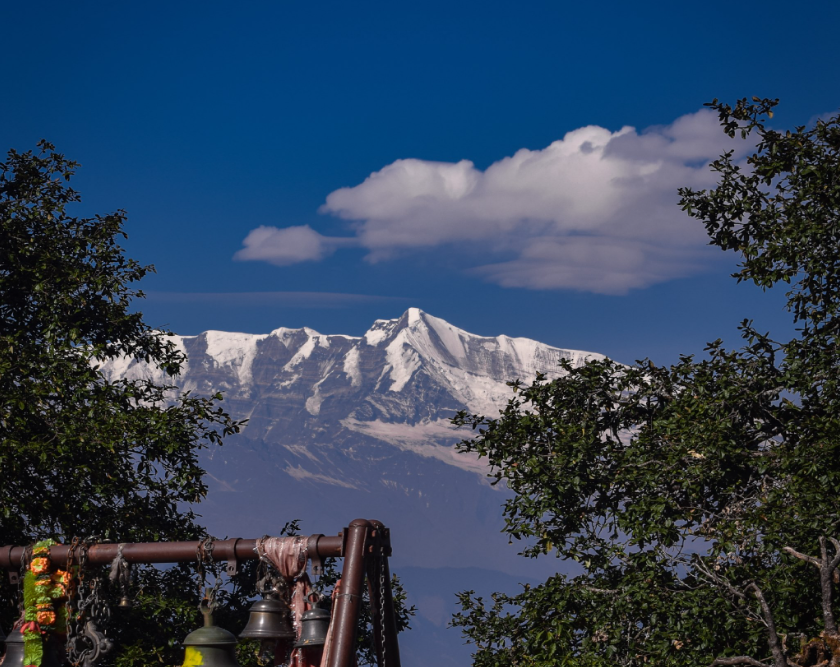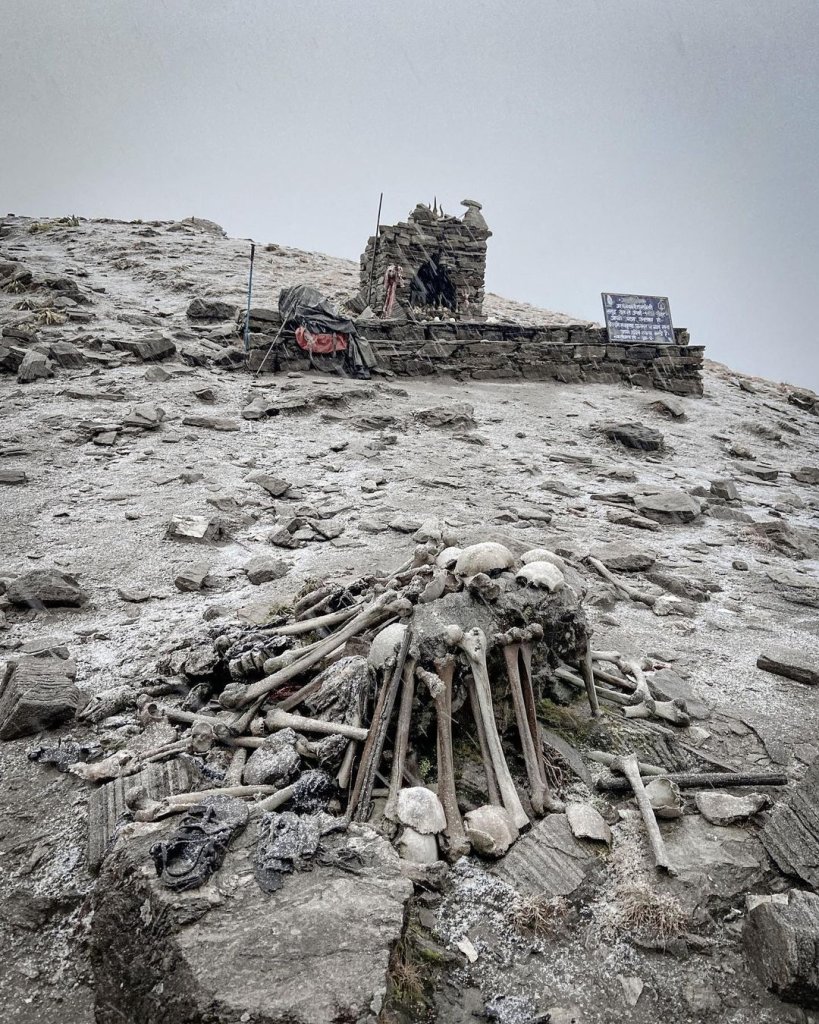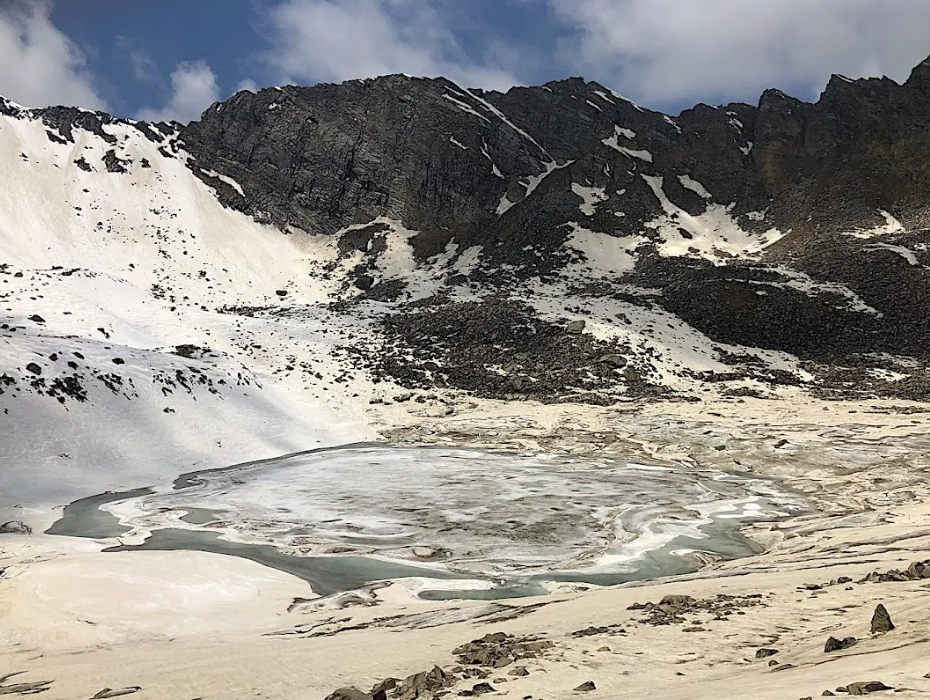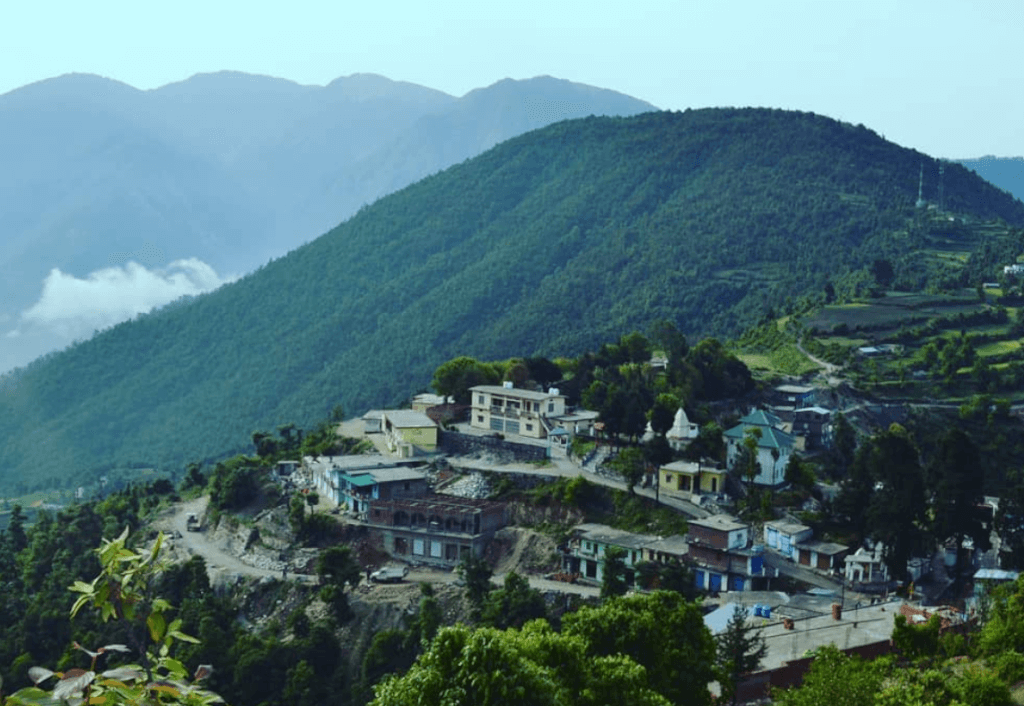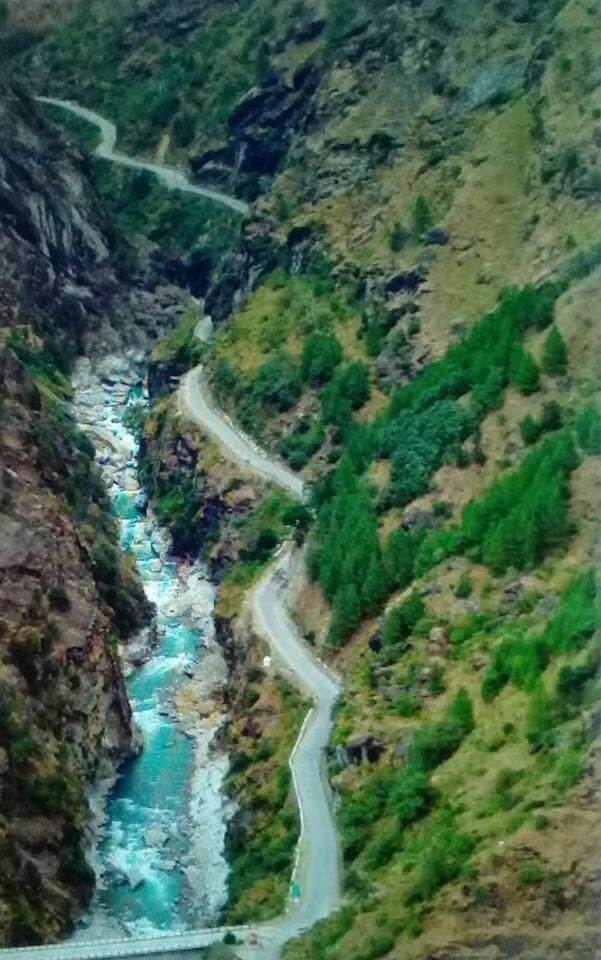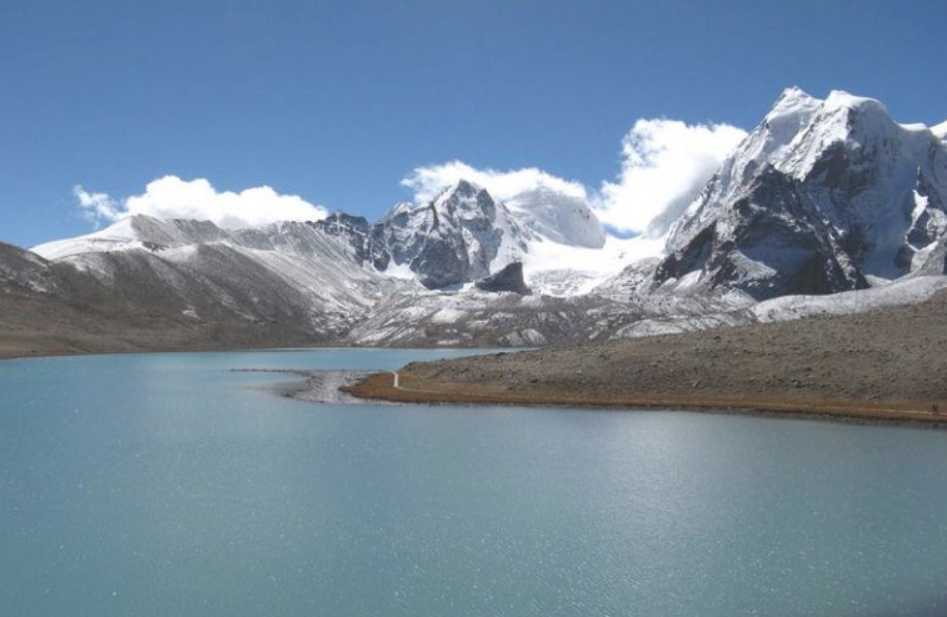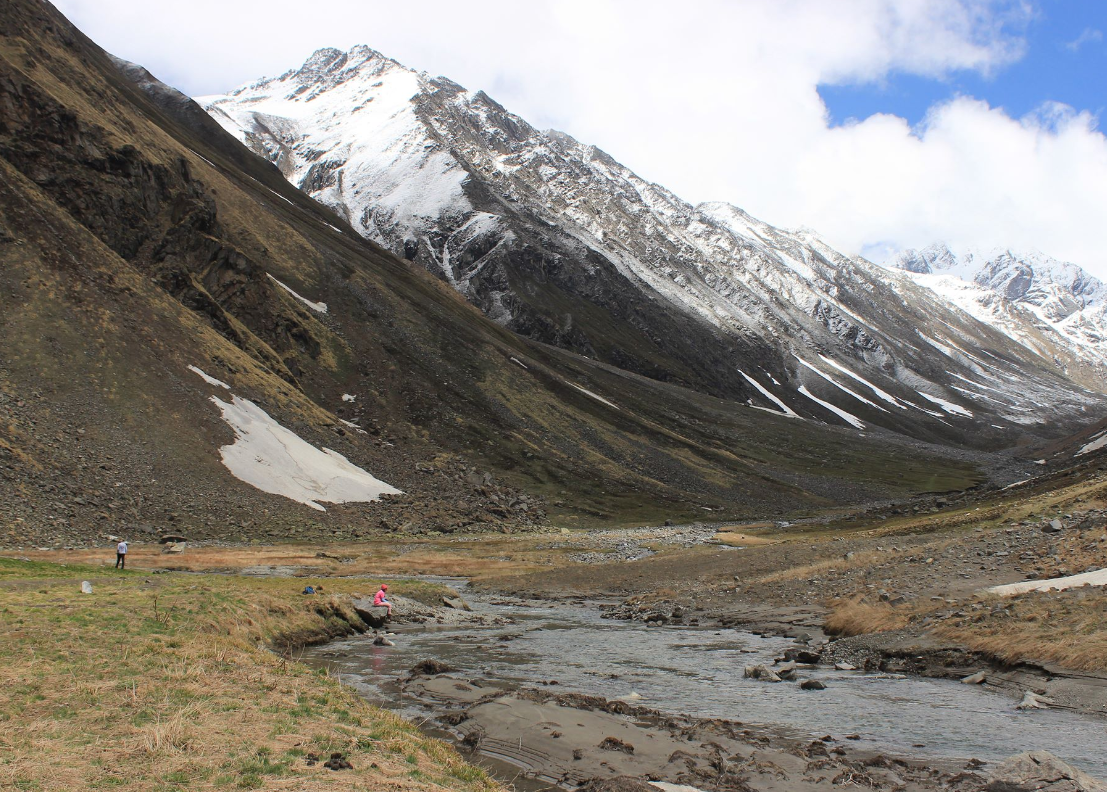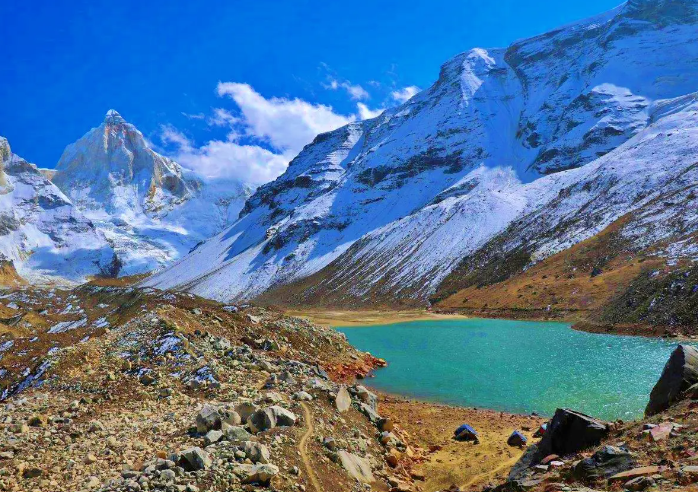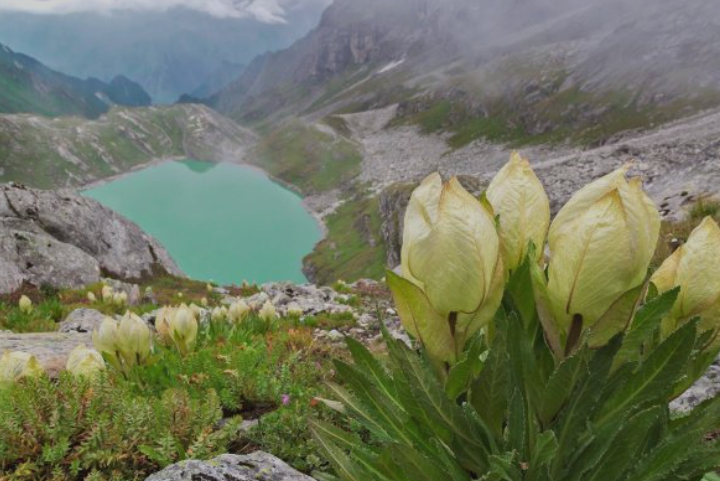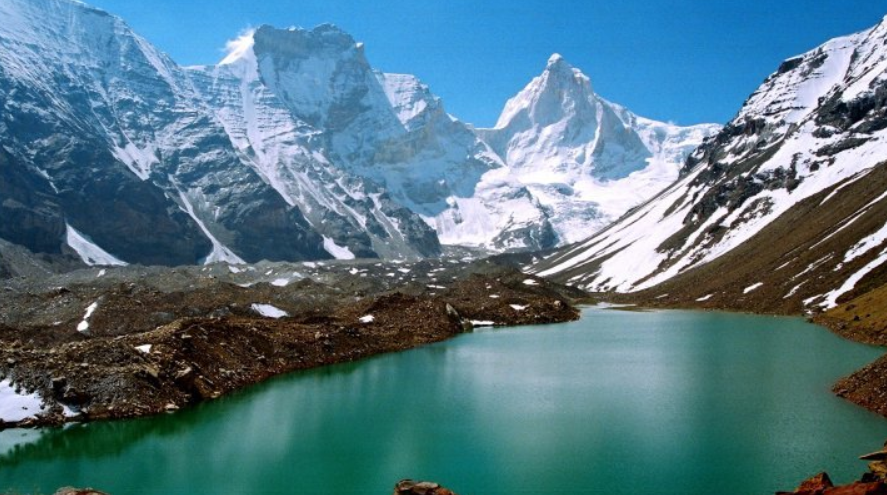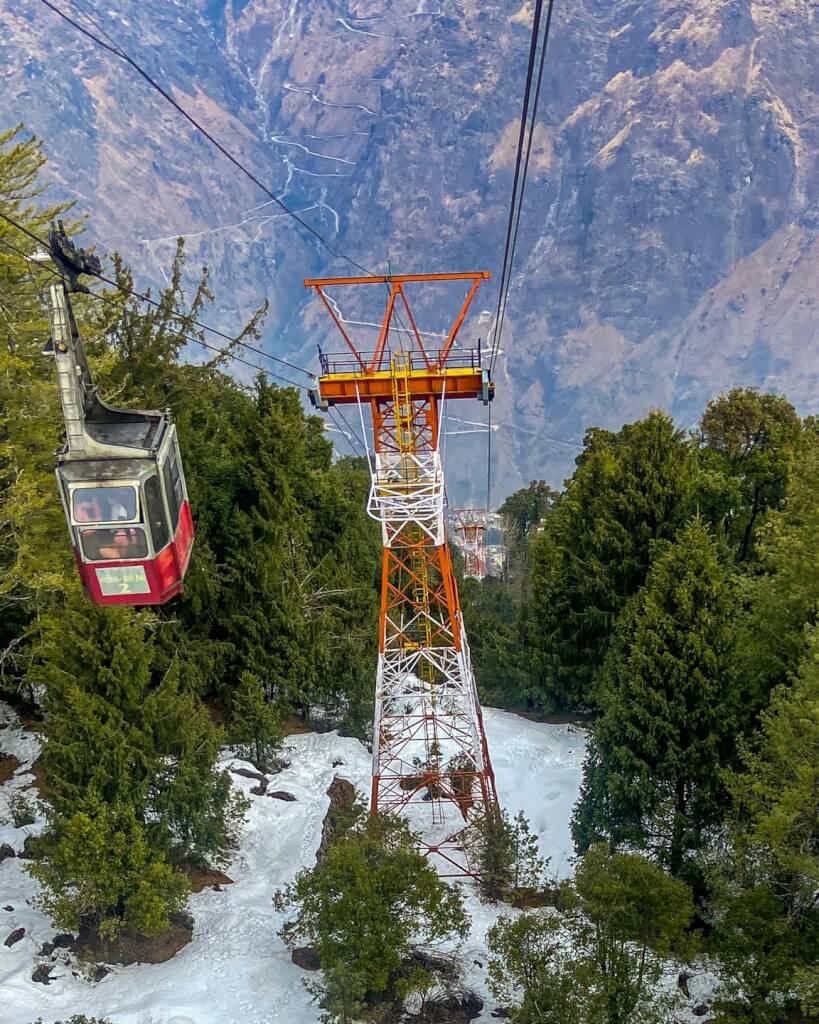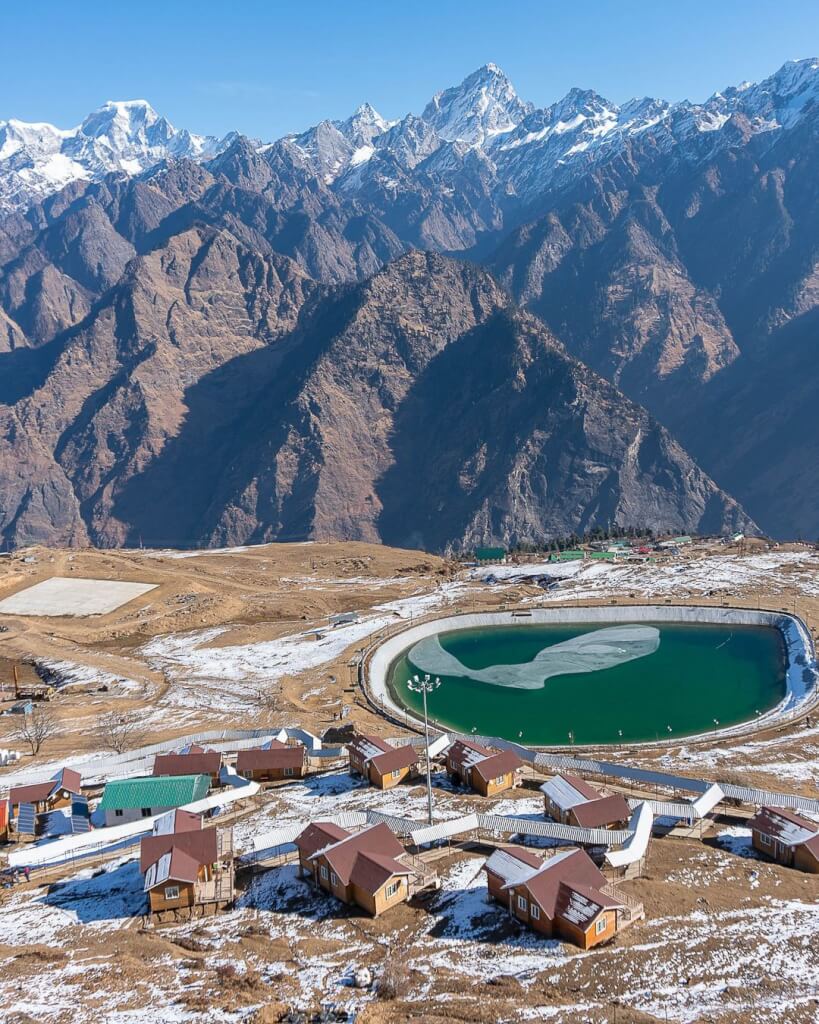Mana Peak, located in the Uttarakhand region of India, is a majestic mountain nestled in the Himalayas. Standing at 7,274 meters, it offers breathtaking views of snow-capped peaks, lush valleys, and pristine glaciers. Situated on the border between India and Tibet, Mana Peak is a significant part of the Kumaon Himalayas and is named after the nearby village of Mana, known as the last Indian village before the Indo-Tibetan border.
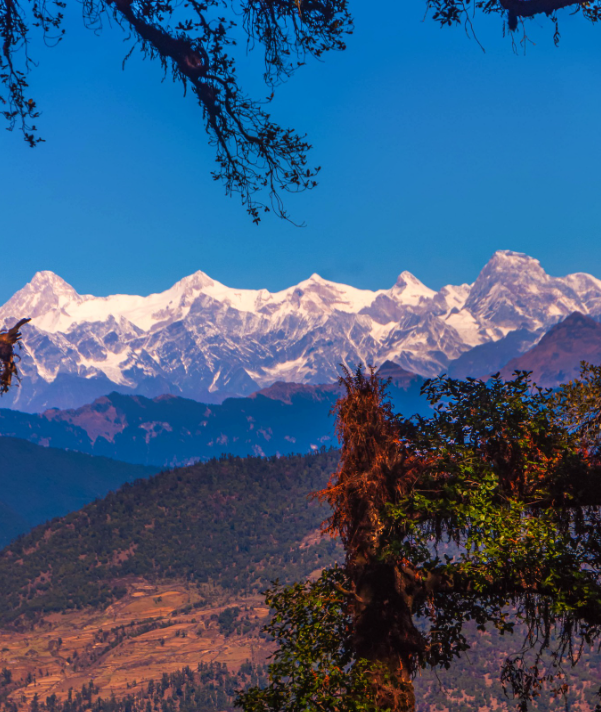
| Location | Chamoli |
| Parent range | Garhwal Himalayas |
| Altitude | 7,274 meters |
| First ascent | By Tenzing Norgay and Raymond Lambert in 1954. |
| Best time to visit | May, Jun, Sep, Oct |
History related to Mana Peak
Mana Peak, located in the Chamoli district of Uttarakhand, India, holds significant historical and cultural importance. Here are some historical aspects related to Mana Peak and its surroundings:
Spiritual Significance: Mana Peak is situated in close proximity to the revered pilgrimage site of Badrinath, one of the four sacred sites in Hinduism known as the Char Dham. It is believed that Lord Vishnu, a major deity in Hinduism, meditated in the area around Badrinath, including Mana Peak.
Ancient Trade Route: Mana Pass, located near Mana Peak, has historically been an important trade route between India and Tibet. Traders used this route for centuries to exchange goods, ideas, and culture between the two regions. It has also been a significant route for pilgrims traveling to Mount Kailash in Tibet.
Cultural Heritage: The region surrounding Mana Peak is rich in cultural heritage, with a blend of Hindu and Tibetan Buddhist influences. The village of Mana, located near the peak, is considered to be one of the last inhabited villages before the India-China border. The people of Mana village have preserved their unique cultural practices and traditions over the years.
Mythological Connections: According to Hindu mythology, it is believed that the Pandavas, heroes of the epic Mahabharata, passed through Mana village during their exile. There are various legends associated with this region, including the story of Bhima, one of the Pandava brothers, who is said to have formed the nearby Vasudhara Falls by striking the mountains with his mace.
Natural Beauty: Mana Peak and its surroundings are known for their breathtaking natural beauty. The region is blessed with snow-capped peaks, lush green valleys, and pristine rivers. It attracts tourists, trekkers, and spiritual seekers from around the world who come to experience the tranquility and serenity of the Himalayas.
Overall, Mana Peak and its surrounding area are not only historically significant but also culturally and spiritually enriching, attracting visitors and pilgrims seeking both adventure and enlightenment.
Peaks of Uttarakhand
How To Reach Sankri
Sankri is a picturesque village located in the Uttarkashi district of the Indian state of Uttarakhand. It serves as a…
Bandarpunch Peak
Bandarpunch Peak is a prominent mountain peak in the Garhwal Himalayas of Uttarakhand, India. It stands at an elevation of…
Bhagirathi Peak
Bhagirathi Peak is a prominent mountain peak located in the Garhwal Himalayas of Uttarakhand, India. It is part of a…
Gaumukh Peak
Gaumukh Peak is located in the Indian state of Uttarakhand, in the Garhwal Himalayas. It’s famous primarily because of its…
Kedarnath Peak
Kedarnath Peak is a majestic mountain located in the Garhwal Himalayas of Uttarakhand, India. It stands at an elevation of…
Neelkantha Peak
Neelkantha Peak, also known as the “Garhwal Queen,” is a majestic mountain located in the Garhwal region of the Indian…
Chandrashila Peak
Chandrashila, translating to the ‘Moon Rock,’ crowns the Chandranath Parvat, home to the Tungnath temple of Panch Kedar. This majestic…

